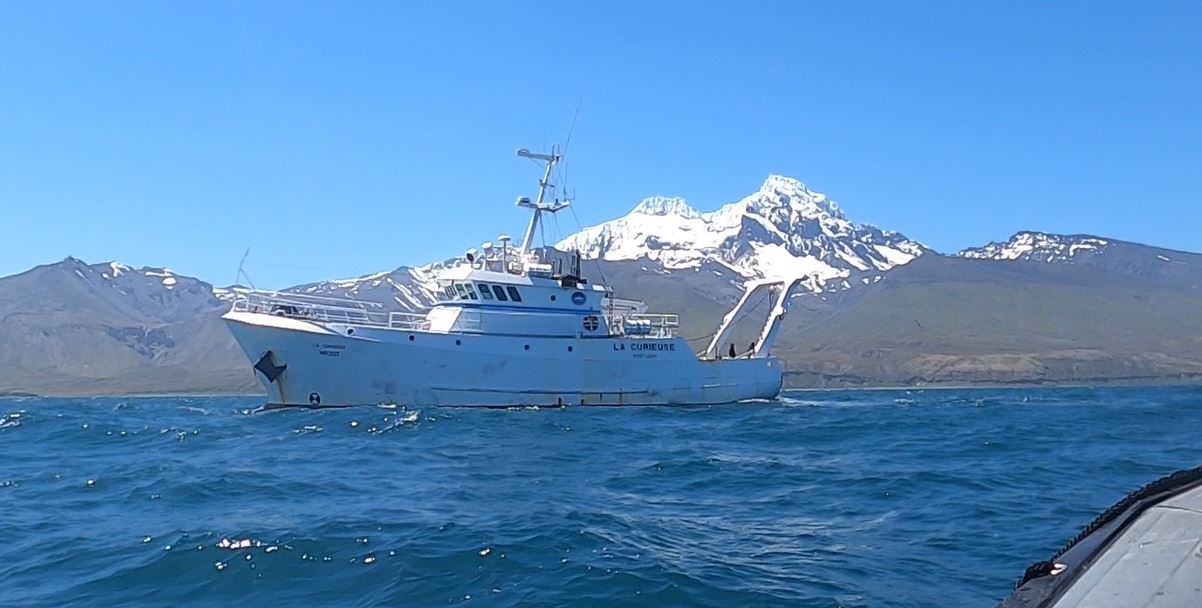The collection of samples required for the MARGO project is carried out during different land and sea expeditions.
During the expeditions on the island of Kerguelen (MARGO_LAND expeditions), samples are taken from various lakes and rivers that are influenced, or not, by the melting of the COOK cap.
Water and particle samples are collected for chemical and geochemical analyses in the laboratory to characterise the material present in the different environments (in particular the concentration of iron and silicon). A special effort is made to sample colloids, which are a few tens of micrometres in size. The colloids are collected for chemical characterisation. But they are also concentrated by an ultrafiltration system to be used in culture experiments that evaluate the bioavailability of colloidal iron for marine bacteria and marine phytoplankton. These experiments are carried out both on land at the Port aux Français base and at sea during the MARGoCEAN campaign on the Marion Dufresne.
The maritime expeditions are carried out on board the ship La Curieuse operated by the French Polar Institute (IPEV) and the French Southern and Antarctic Lands (TAAF) and the Marion Dufresne operated by IFREMER.
The R/V La Curieuse is used to go to the isolated bays of Kerguelen Island (MARGO_BAY). For example, it is from Table Bay that the expedition reaches the Mortadelle hut to carry out part of MARGO_LAND. It is also with La Curieuse that the Irish Bay is studied in detail. Samples of dissolved and particulate matter are taken to find out what happens to the matter of glacial origin when it enters the sea water. Autonomous instruments are also deployed for a year to collect particles on a monthly basis (particle trap), continuously measure currents, salinity and temperature, collect samples for metal analysis.

The R/V Marion Dufresne is used to study the transfer of material of glacial origin from the coast to the open ocean. This is done during the MARGOCEAN campaign in which 20 French and foreign scientists from 8 laboratories participate. In the coastal zone, a particle trap is deployed to estimate the transport of glacial material on an annular scale. Surface sediments are sampled to determine the fraction of this material that sinks rapidly and therefore does not reach the open ocean. During this cruise the ocean circulation from the coast to the open ocean is studied in detail using drifting floats, ADCP current meters attached to the hull of the Marion Dufresne and satellite data provide information on water colour and height. The chemical composition of the seawater is studied by focusing on the first 300 metres of the water column. Microorganisms are sampled for community composition and to study their response to material of glacial origin transported offshore.

